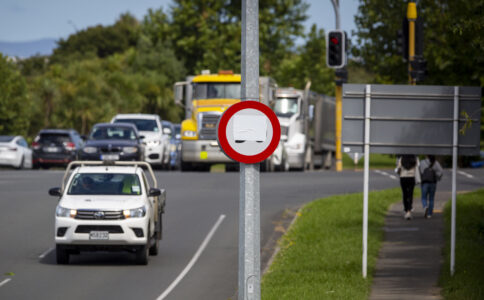
A firmer commitment to traffic speed limit enforcement in east Auckland, including the use of speed cameras and fines, is being called for in an effort to reduce crashes and fatalities.
The Howick Local Board signed off on the feedback it’s providing to Auckland Transport (AT) on the agency’s interim speed management plan at one of its last business meetings in 2023.
The board says it doesn’t support lowering speed limits “carte blanche” across urban streets as “drivers who choose to ignore speed limits will do so irrespective of whatever limit is set”.
The previous Labour Government implemented blanket speed limit reductions, a move opposed by the National Party.
One of the most outspoken opponents of the speed reduction policy was Pakuranga MP and now Transport Minister Simeon Brown, who last year launched a petition calling for AT to reinstate the previous, higher speed limits on Pakuranga Road, Ti Rakau Drive, and Te Irirangi Drive.
“These roads are the critical main arterials for east Auckland and they’re incredibly important to moving tens of thousands of people in and out of the area on a daily basis,” Brown said at the time.
“It’s important they’re operating as efficiently as possible and that’s why the speed limits should be reinstated.”
In December last year Brown announced, in his role as Transport Minister, the coalition Government would amend speed limit rules as part of its commitment to stop blanket speed limit reductions.
The local board’s feedback to AT states it supports reducing fatalities locally and nationally via well thought-out speed management planning.
It also backs a vision of fewer vehicles on the roads, but for that to happen public transport needs to improve.
The board supports the installation of traffic-calming methods and wants to “see a firmer commitment to traffic speed enforcement on identified roads, including the use of speed cameras with infringements”.
Its members told AT there are community safety concerns around numerous roads in east Auckland.
They want the agency to provide a timeline of when the roads will be addressed and which recommended suitable options will be identified.
The board supports speed reductions where there is significant pedestrian traffic and backs the use of temporary speed reductions where children are entering or leaving school grounds.
It wants to see traffic-calming measures on roads where there’s been a “frequency” of crashes due to poor driver behaviour and its members oppose significant speed reductions replacing speed limit enforcement.
“Dangerous driving/racing, particularly involving youth, can often be resolved by interaction with police,” they told AT.
“Enforcement should be considered as an essential tool for changing driver behaviour.”
Nor do they support reducing speeds on commuter roads.
“Larger arterial and well-used roads need to have their existing speed limits maintained in the majority of cases or the city will grind to even more of a standstill than it has already, particularly in peak flows.
“Congested traffic is generally able to keep moving on roads with higher speed limits.
“Penalising law-abiding drivers by increasing journey times is both unfair and not the answer.”










